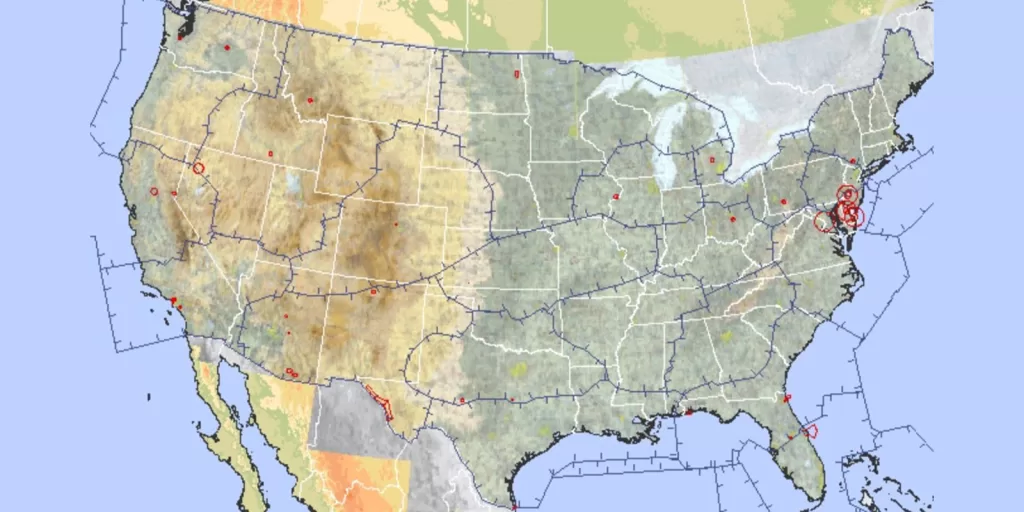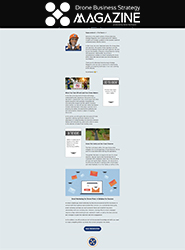
At Aerial Northwest, we understand the importance of safe and compliant drone operations. As a provider of drone services, we are committed to sharing valuable insights and information with our clients and the wider drone community. In this article, we will delve into the topic of Temporary Flight Restrictions (TFRs) and provide you with a comprehensive understanding of their significance, implementation, and how to navigate them effectively. Our aim is to equip you with the knowledge and tools necessary to ensure your drone operations remain both legally compliant and safe.
What are Temporary Flight Restrictions (TFRs)?
Temporary Flight Restrictions (TFRs) are airspace restrictions imposed by the Federal Aviation Administration (FAA) to protect people and property on the ground, as well as manned aircraft operating in the vicinity. These restrictions are often put in place during emergencies, special events, or when national security concerns arise. TFRs play a crucial role in maintaining the integrity of the National Airspace System (NAS) and preventing potential conflicts between drones and other aircraft.
Understanding the Purpose of TFRs
TFRs serve multiple purposes, all aimed at ensuring the safety and security of the airspace. Some common reasons for implementing TFRs include:
- Emergency Situations: During natural disasters such as wildfires, hurricanes, or earthquakes, TFRs are established to facilitate the work of emergency response teams and prevent unauthorized drone flights that could interfere with rescue operations.
- Airspace Security: TFRs may be established in areas where the President of the United States or other dignitaries are present. These restrictions help maintain a secure environment and protect against potential threats.
- Special Events: TFRs are frequently implemented during major public events, such as sporting events, concerts, or political rallies. They ensure the safety of participants and spectators by preventing unauthorized drone operations that could pose risks to crowds or manned aircraft.
Types of Temporary Flight Restrictions
TFRs can be categorized into several types, each with its own specific requirements and limitations. Here are some common types of TFRs:
- Prohibited Areas: These are permanent TFRs that restrict all aircraft, including drones, from entering designated areas due to national security concerns. These areas are typically closely guarded and often coincide with sensitive military installations or government facilities.
- Restricted Areas: Similar to prohibited areas, restricted areas also restrict access to certain airspace. However, these restrictions are not permanent and can be lifted under specific circumstances. Permission from the controlling authority, typically the FAA, is required to enter these areas.
- Temporary Flight Restrictions: As the name suggests, temporary flight restrictions are temporary airspace restrictions established for specific events or situations. These can be further classified into three subcategories:
a. VIP TFRs: These TFRs are implemented when the President of the United States or other high-ranking officials visit a particular area. They create a no-fly zone around the location to ensure security.
b. Disaster TFRs: Implemented during natural disasters, these TFRs prohibit drone flights in affected areas to facilitate response and recovery efforts.
c. Special Event TFRs: These TFRs are established for major public events and prohibit unauthorized drone operations within a specified radius of the event location.
Adhering to TFRs: Ensuring Compliance
Compliance with Temporary Flight Restrictions is of utmost importance to maintain the safety and integrity of the airspace. Failure to adhere to TFRs can result in severe penalties and legal consequences. Here are some key steps to ensure compliance:
- Stay Informed: Regularly check the FAA’s website, official announcements, and other reliable sources for the latest information on TFRs. These sources will provide details about the location, duration, and specific restrictions associated with each TFR.
- Plan Ahead: If you have a planned drone operation, conduct thorough research to identify any potential TFRs in the vicinity of your desired flight area. Plan alternative routes or reschedule operations if TFRs are in effect.
- Utilize Technology: Leverage drone flight planning and airspace management tools that integrate real-time TFR data. These tools can help you visualize TFRs, plan safe routes, and ensure compliance with airspace regulations.
- Coordinate with Authorities: If your drone operation falls within or near a TFR, seek permission from the controlling authority. Contact the FAA or any other relevant agencies to obtain necessary clearances or waivers.
The Takeaway
Temporary Flight Restrictions are a crucial component of airspace management and play a vital role in ensuring the safety and security of both manned and unmanned aircraft operations. Understanding the types of TFRs, their purpose, and how to navigate them effectively is essential for all drone operators. By staying informed, planning ahead, utilizing technology, and coordinating with authorities, you can ensure compliance with TFRs and conduct your drone operations in a safe and legally compliant manner.
Remember, prioritizing safety and compliance not only contributes to the overall advancement of the drone industry but also helps build trust among stakeholders and promotes responsible drone operations.
Be smart, safe, and forever fly!
If you have any questions, let us know! If you’d like to hire us, you can get more information here.
Written by: Tony Marino, MBA – FAA Certified Part 107 Commercial Drone Pilot and Chief Business Strategist at Aerial Northwest
Disclaimer: The information provided in this blog post is for general informational purposes only and should not be construed as legal advice.

DRONE BUSINESS STRATEGY MAGAZINE
A free digital publication made exclusively for all small business drone pilots to them help start-up, become profitable while sustaining a competitive advantage within the drone service industry sector they opt to serve.
“If you love to fly, we’d love to have you come aboard!”
We share your information with no one. Our Privacy Policy.









2 Comments
Leave your reply.